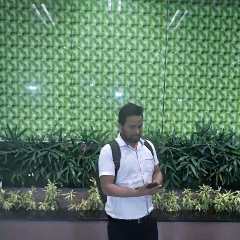Question 1 :
<img style='object-fit:contain' src='https://teachmint.storage.googleapis.com/question_assets/cbse_ncert/61b19d28273b230584979baf.JPG' />
In the given figure, name the carbon compound.
Question 4 :
We cannot use detergent to check if water is hard because it does not form ____.
Question 5 :
With concentrated sulphuric acid, ethanol reduces to ethene and water. Is it TRUE OR FALSE ?
Question 6 :
The bonds formed by elements of bigger size are more weaker. Is it TRUE OR FALSE ?
Question 7 :
Carbon has a tendency to form more than 4 bonds. Is it TRUE OR FALSE?
Question 9 :
Saturated carbon compounds are less reactive than unsaturated carbon compounds. State TRUE or FALSE.
Question 10 :
Series of compounds in which the same functional group substitutes for hydrogen in a carbon chain is called a homologous series. Is it correct ?
Question 11 :
The amount of carbon present in the earth’s crust and in the atmosphere is quite meagre. Is it TRUE OR FALSE?
Question 12 :
<img style='object-fit:contain' src='https://teachmint.storage.googleapis.com/question_assets/cbse_ncert/61b19d28273b230584979baf.JPG' />
In the given figure, name the carbon compound.
Question 13 :
Series of compounds in which the same functional group substitutes for hydrogen in a carbon chain is called?
Question 14 :
<img style='object-fit:contain' src='https://teachmint.storage.googleapis.com/question_assets/cbse_ncert/61b19d20273b230584979ba6.JPG' />
In the above figure, identify the carbon compound.
Question 16 :
Most of the fuels we use are either carbon or its compounds. Is the statement correct ?
Question 17 :
Series of compounds in which the same functional group substitutes for hydrogen in a carbon chain is called?
Question 26 :
Carbon, in all its allotropic forms, burns in oxygen to give carbon dioxide with the release of heat and light.. Is it TRUE OR FALSE?
Question 28 :
<img style='object-fit:contain' src='https://teachmint.storage.googleapis.com/question_assets/cbse_ncert/61b19d2a273b230584979bb2.JPG' />
In the given figure, name the carbon compound.
Question 29 :
The ionic end of soap reacts with the oil particles. State TRUE or FALSE.
Question 31 :
<img style='object-fit:contain' src='https://teachmint.storage.googleapis.com/question_assets/cbse_ncert/61b19d2c273b230584979bb4.JPG' />
In the given figure, name the compound.
Question 32 :
The chemical properties, which are determined solely by the functional group, remain similar in a homologous series. Is it TRUE OR FALSE?
Question 34 :
Saturated hydrocarbons will generally give a yellow flame with lots of black smoke while burning. Is it TRUE OR FALSE?
Question 35 :
<img style='object-fit:contain' src='https://teachmint.storage.googleapis.com/question_assets/cbse_ncert/61b19d1e273b230584979ba4.JPG' />
In the above figure, an allotrope of carbon has been given. Write the name of the substance
Question 37 :
<img style='object-fit:contain' src='https://teachmint.storage.googleapis.com/question_assets/cbse_ncert/61b19d29273b230584979bb1.JPG' />
In the given figure, name the carbon compound.
Question 38 :
<img style='object-fit:contain' src='https://teachmint.storage.googleapis.com/question_assets/cbse_ncert/61b19d21273b230584979ba7.JPG' />
In the above figure, identify the carbon compound.
Question 41 :
Water is a by product when ethanol reacts with sodium. Is it TRUE OR FALSE?
Question 42 :
Saturated hydrocarbons give a sooty flame in absence of air. Is it TRUE OR FALSE?
Question 43 :
Why is the conversion of ethanol to ethanoic acid an oxidation reaction?
Question 45 :
With concentrated sulphuric acid, ethanol reduces to ethene and water. Is it TRUE OR FALSE ?
Question 46 :
<img style='object-fit:contain' src='https://teachmint.storage.googleapis.com/question_assets/cbse_ncert/61b19d22273b230584979ba8.JPG' />
In the above figure, identify the carbon compound.
Question 48 :
Substitution reaction takes place by radical mechanism. Is it TRUE OR FALSE?
Question 49 :
<img style='object-fit:contain' src='https://teachmint.storage.googleapis.com/question_assets/cbse_ncert/61b19d24273b230584979bab.JPG' />
In the given figure, name the carbon compound.











































